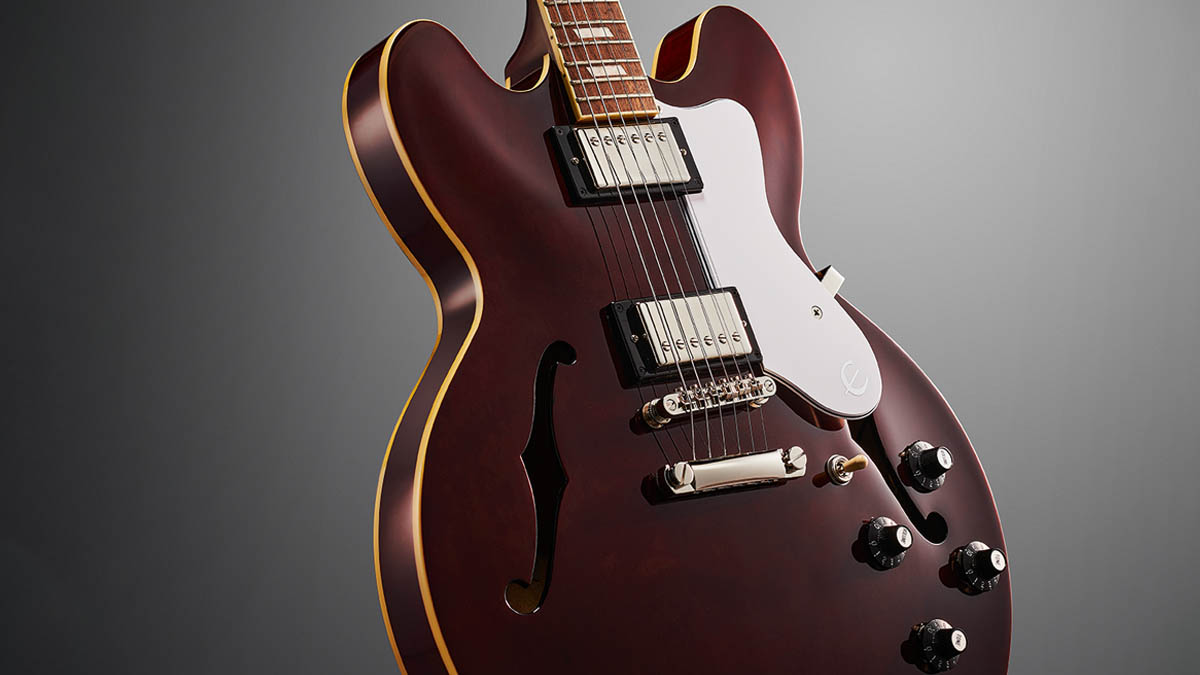Guitar World Verdict
It could be suggestion, it could be fandom, but it feels like this guitar has ideas in it – and all you’ve got to do is find them. Noel used a similar-level instrument to cement himself in history, and the potential is inspiring.
Pros
- +
Inspiring sounds and playability.
- +
Standard sized ’buckers make for authentic Oasis-era tones.
- +
Classy finish and understated signature flourishes.
- +
Hardshell case included.
Cons
- -
Purists might prefer the original Frequensator-equipped Riviera.
You can trust Guitar World
Cast your mind back to 1996 and the height of Britpop, and there’s every chance this guitar will ring a vivid bell. Oasis had released their second album, (What’s The Story) Morning Glory?, ‘Cool Britannia’ was in full swing, and Noel Gallagher was busy reigniting the nation’s six-string passion. His Wine Red Epiphone Riviera played a huge part in this.
Not only was it featured in the Don’t Look Back In Anger video, but it made an appearance in the promo for Champagne Supernova too, alongside loads of live performances.
While Noel had plenty of nice electric guitars by this point, it’s for the reasons above that the Epiphone stood out to so many, and, crucially, fans could go and buy an Epiphone at affordable prices without having to ‘compromise’ with the affordable version of a Gibson to get the same guitar as their hero. It was an Epiphone that Noel was using.
All this, of course, is our booze-tinted-goggles build-up to the fact that Epiphone has finally released an affordable Noel Gallagher guitar. Yes, there was the Supernova, but that wasn’t an ‘organic’ model in Gallagher’s guitar rack in the way the early-’80s Riviera was, and it’s also long-discontinued.
But it presents a conundrum – why would you buy this guitar, priced at around $200 more ‘on the street’ than Epiphone’s stock production Riviera? That’s what we’re here to find out. But first, a bit of history.
The Riviera shares a lot of its features with Gibson’s ES-335. Noel’s guitar was a Japanese-made catalogue Epiphone from the early ’80s, and at the time, the guitar was offered in two finishes: Antique Sunburst or Wine Red.
It also came with humbuckers as standard, and was fitted with Epiphone’s Frequensator tailpiece – which kept the total length of the bass strings longer, while shortening the treble strings. The idea being that the fundamental frequencies of each would be accented.
It’s a really nice-looking Epiphone in a cool finish that’s otherwise unavailable
A quick comparison between the current Riviera and the Noel Gallagher signature model will show you two key differences. First are the pickups – the stock version is fitted with traditional mini-humbuckers. Second is that tailpiece we just mentioned: Noel’s guitar swaps the Frequensator for an Epiphone LockTone stopbar.
We get the full-size humbuckers, the correct finish, the parallelogram fretboard markers (orientated to the left, as with Noel’s original), even the ‘crown’ headstock inlay. So spec-wise, it’s based on the correct era of Riviera to match Noel’s, and basically saves you some messing about with swapping hardware and pickups. Not bad at all for $200.
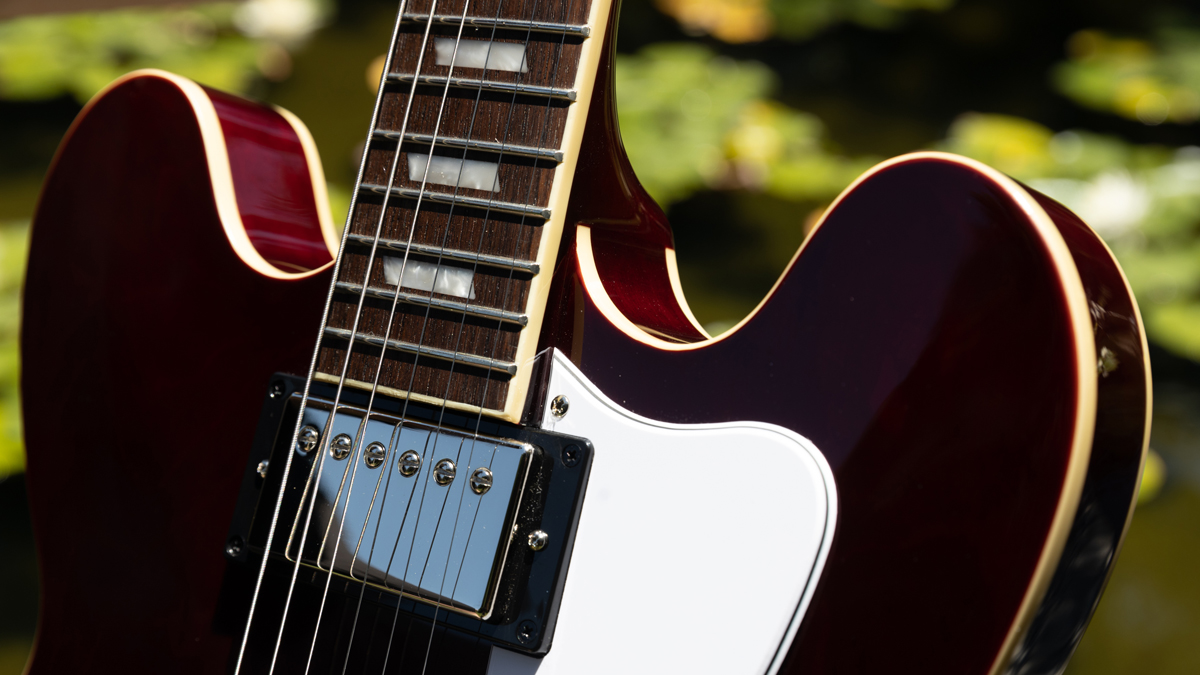
Enough comparison, then, and time to delve into the Riviera we have to hand. It starts with a five-ply, laminated maple body, and there’s a maple centre-block running through the middle to help tame feedback. The neck is also made of maple, featuring a SlimTaper profile and volute, while the Indian laurel fingerboard is a familiar 24.75-inch scale length with 22 frets.
As mentioned, it’s a dual-humbucker configuration, in this case a pair of Alnico Classic PROs in both positions, and continuing the theme of familiarity, they’re wired to a three-way switch and individual tone and volume controls for each pickup. In essence, everything is as we’d expect.
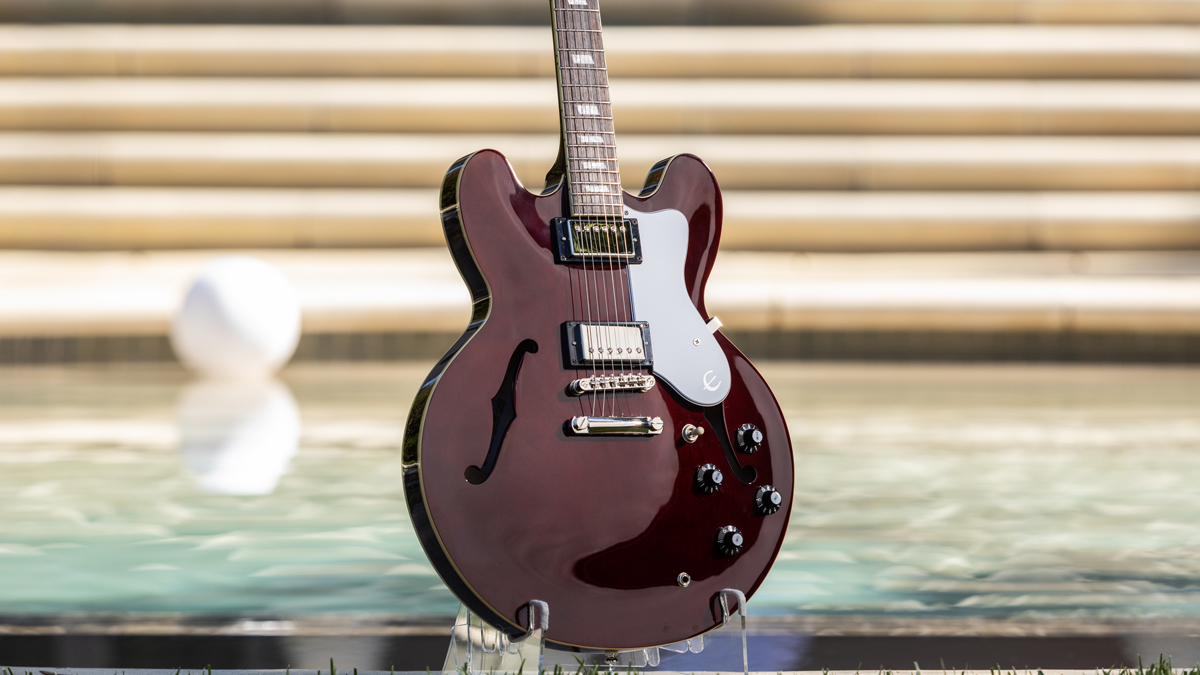
The first thing that hits us on removing the guitar from the included Epiphone hardcase, is just how understated the signature element is. If you know, you know; if not, it’s only the signature to the rear of the headstock that denotes this as Noel’s replica.
Outside of this, it’s a really nice-looking Epiphone in a cool finish that’s otherwise unavailable.
The SlimTaper neck is one of the biggest surprises – it’s thin, but doesn’t feel too modern, particularly given that if we’re going for Noel’s playing style, there’s a strong mix of open and barre chords required as well as lead playing. This sets a decent middle ground for both, and makes the open-string voicings nice and easy.
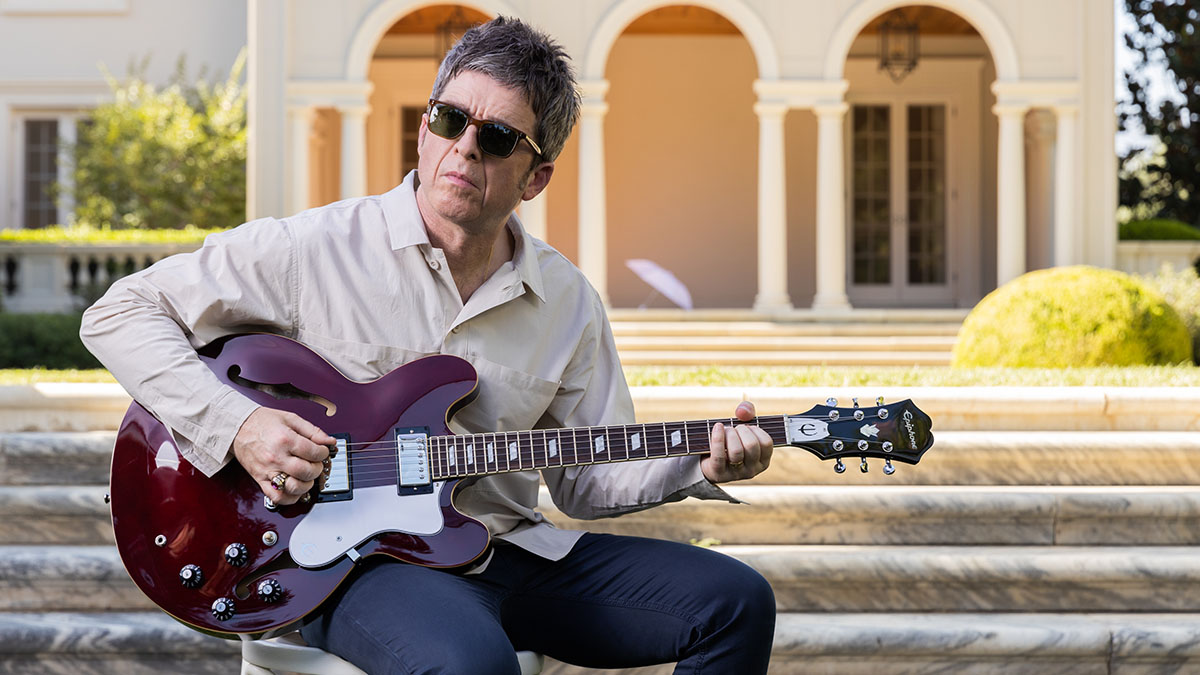
Tone-wise, it’s all very much as you might expect, too. The neck sounds are big, full and round, and begging for some crunchy overdrive. The reward is classic indie rhythm sounds, and an addictive bluesy lead tone. We did find ourselves parked on the neck pickup for longer than normal, but if that fat darkness is a bit too much for you, the middle and bridge positions will offer additional spike and sparkle.
Ultimately, this guitar fulfils its purpose, and is more evidence that a semi‑acoustic isn’t simply for vintage rock ’n’ roll or blues – although it obviously excels at this, too. Open it up a bit and you’ll get meaty rock rhythm and lead tones, but more than anything, this guitar inspired us to want to play it.
Specs
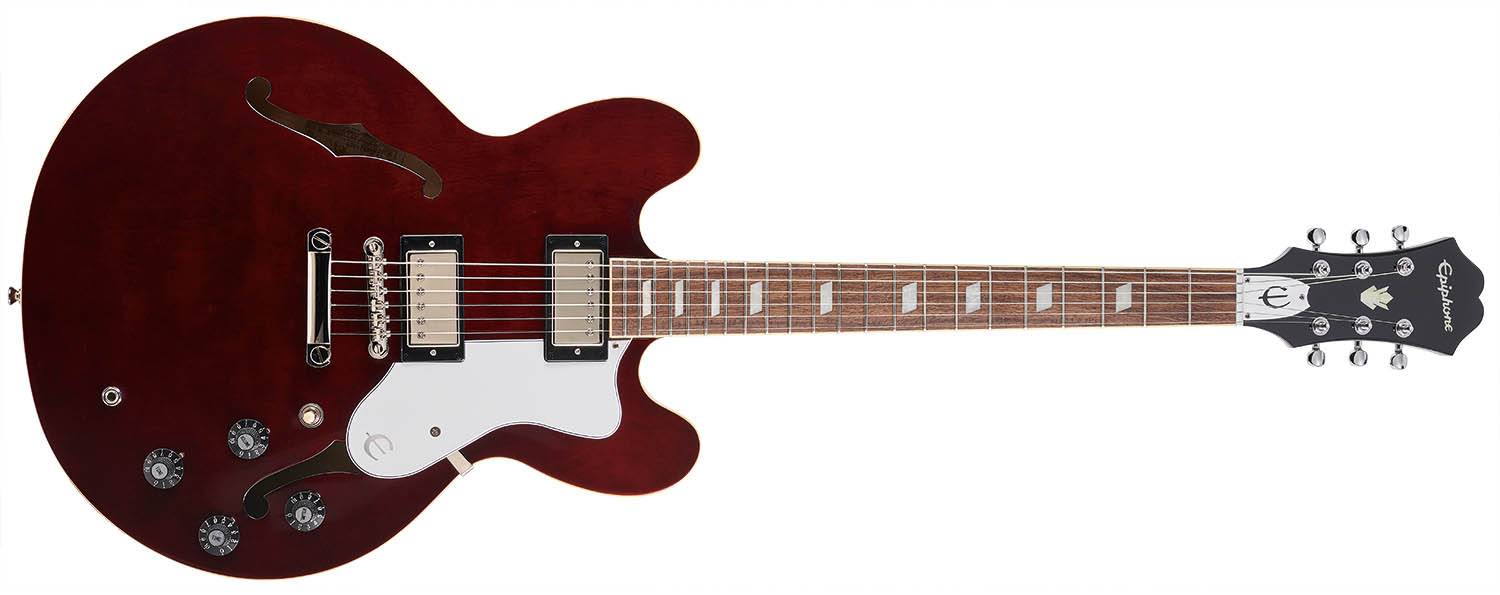
- PRICE: $899 / £789
- BODY: Maple, laminate with centre block
- NECK: Maple
- FINGERBOARD: Indian laurel
- FRETS: 22
- PICKUPS: Epiphone Alnico Classic PRO
- CONTROLS: 2x volume, 2x tone, 3-way switch
- HARDWARE: Nickel
- LEFT-HANDED: No
- FINISH: Dark Wine Red
- CASE: Yes
- CONTACT: Epiphone

Stuart has been working for guitar publications since 2008, beginning his career as Reviews Editor for Total Guitar before becoming Editor for six years. During this time, he and the team brought the magazine into the modern age with digital editions, a Youtube channel and the Apple chart-bothering Total Guitar Podcast. Stuart has also served as a freelance writer for Guitar World, Guitarist and MusicRadar reviewing hundreds of products spanning everything from acoustic guitars to valve amps, modelers and plugins. When not spouting his opinions on the best new gear, Stuart has been reminded on many occasions that the 'never meet your heroes' rule is entirely wrong, clocking-up interviews with the likes of Eddie Van Halen, Foo Fighters, Green Day and many, many more. If he's not playing the guitar, you'll likely find Stuart behind the kit playing Valerie to newlyweds.
“It holds its own purely as a playable guitar. It’s really cool for the traveling musician – you can bring it on a flight and it fits beneath the seat”: Why Steve Stevens put his name to a foldable guitar
“Finely tuned instruments with effortless playability and one of the best vibratos there is”: PRS Standard 24 Satin and S2 Standard 24 Satin review
